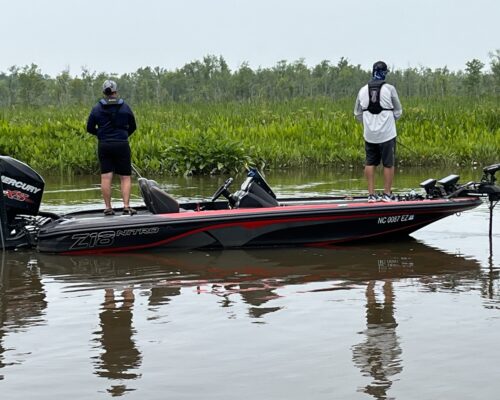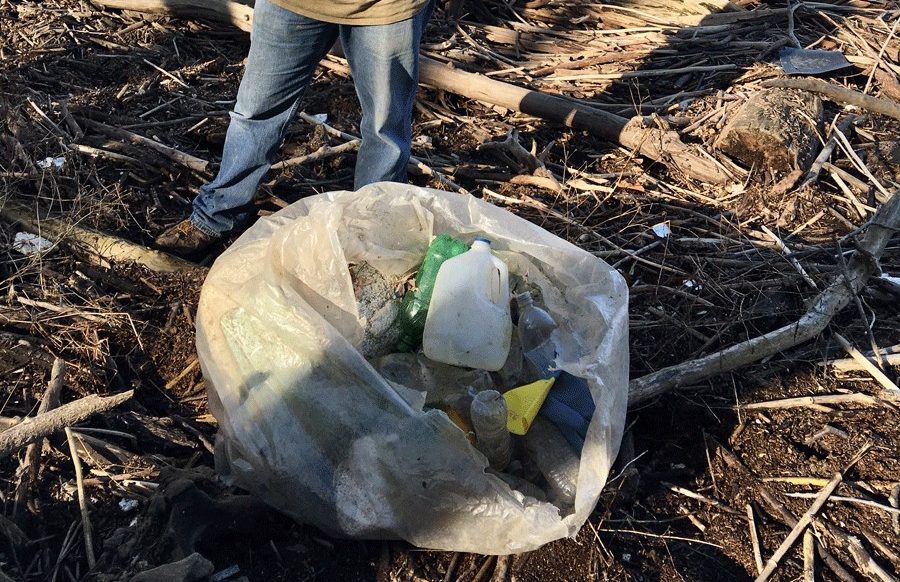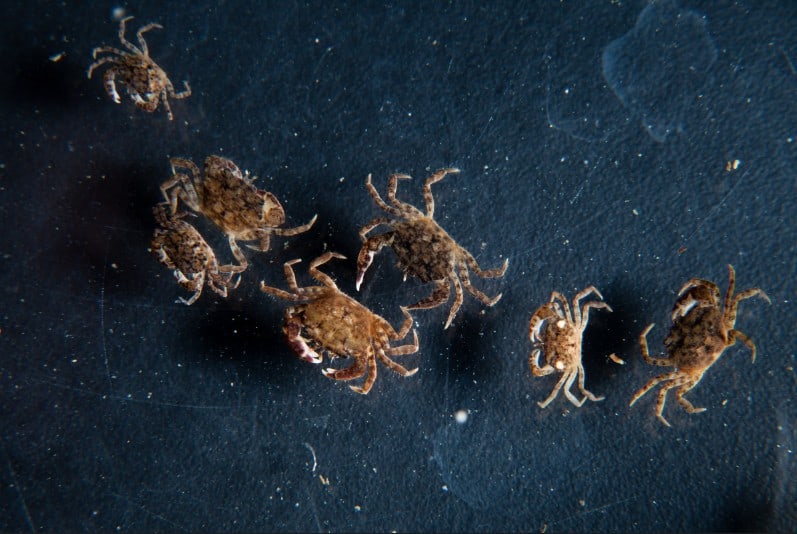As the largest estuary in the United States, the Chesapeake Bay holds countless natural wonders, and behind its best-known species are many others you likely haven’t heard of. Take the lined seahorse. It has a quiet presence and plays a surprisingly crucial role in the Bay’s health.
And it also happens to be heavily susceptible to the ever-growing challenges this body of water faces.
This incredible creature is the only seahorse species that inhabits this historic waterway. It comes in an array of colors ranging from light brown to rusty red, and measures around 4 to 6 inches long. It’s primarily found from the Bay’s middle portion to Southern Maryland, although it also has a limited presence in a few other shallow coastal areas along the Atlantic.
The species itself is remarkable despite its small size. While they might be tough to see with the naked eye, each seahorse is covered in tiny bony plates that provide extra protection from predators and keeps them upright when swimming. Known of course for their horse-like heads, they slowly bob through the water with the help of a tiny dorsal fin that moves up to 70 times per second. To keep itself from floating away in waves or currents, the seahorse will wrap its prehensile tail around nearby grasses for stability.
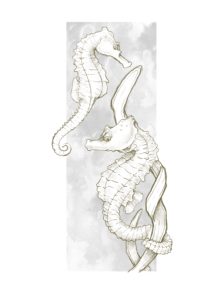
The lined seahorse has a rapid digestive system, and because of this, it constantly needs to eat for energy. When they find a meal (they’re partial to minuscule crabs or plankton), the fish will slurp them up through its tiny snout.
This whimsical sea creature is also equipped with impressive camouflage skills. When a predator passes by, the animal will instantly change its color to match its surroundings. For extra defense, the seahorse will tightly secure its tail around a nearby object to stay steady. This disguise works so well that the seahorse is usually safe from being a snack, but still needs to watch out for frequent nemeses such as crabs and birds.
During courtship season, which runs from May to October, the male seahorse will dance and make clicking sounds around a potential partner while shimmering in various colors—a display meant to impress a potential mate. Often, the hue will match the surroundings, so if the pair is situated near a thick bunch of seagrass, his body could adopt green and brownish shades. Once they pair up, the two will be life partners.
Perhaps what makes the seahorse so remarkable, though, is what happens after the courtship. Once accepted, the female will pass her eggs into a pouch in the male’s abdomen where they will be fertilized. Here they’ll stay for a few weeks before he releases them—a number which can sometimes reach 200 babies, and which makes the seahorse one of the only animals on earth where the male is responsible for giving birth.
While the lined seahorse’s behavior and looks are engrossing, one of the most intriguing aspects of this sea creature is the role it plays in the Chesapeake Bay’s health. This fish not only feeds on troublesome organisms such as brine shrimp and algae, but it is a favorite meal for much of the Bay’s iconic wildlife, including crabs and seabirds. That makes them a small yet critical piece in ensuring the Bay’s ecosystem stays in check.
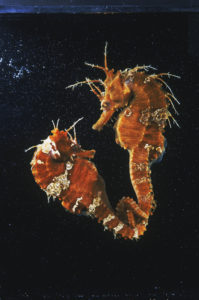
Despite their critical role in the Bay’s health, however, their population is in decline. During yearly trawls by the Virginia Institute of Marine Science, only about 40 to 100 seahorses are typically found. While their original population numbers aren’t fully known, it’s suspected that pollution has led to even more drastically lower numbers.
“Seahorses are present in the Bay but are considered to be uncommon,” says Perry Hampton, the Calvert Marine Museum’s estuarine biology curator. “I suspect that in the past they may have been more plentiful when seagrass beds were abundant. For many species that are threatened or endangered, the primary culprit is often loss of habitat and that is definitely the case with the Bay’s seahorses.”
Seahorses are listed as vulnerable by the International Union for Conservation of Nature, as they’re often overcaught to use in the aquarium trade and for traditional Chinese medicine. While the Chesapeake’s lined seahorse itself isn’t necessarily at risk from these issues, it has its own problems to watch out for—primarily climate change and pollution.
These issues aren’t necessarily damaging to the seahorse itself but to eelgrass—a rapidly disappearing habitat the seahorse community desperately needs for survival. This long, wavy grass begins growing in the Bay during the late winter and eventually spreads its seeds during the spring, creating lush patches. It not only serves as a seahorse haven but helps strain pollutants and limits erosion, contributing significantly to ecosystem health.
Eelgrass has been slowly declining since the 1970s, and while it hasn’t completely vanished, many areas that were once packed with it are bare, especially toward the Bay’s lower section. Runoff pollution (usually a toxic combination of pesticides and oils) is one worry, and one of its biggest afflictions is the abundance of fertilizer.
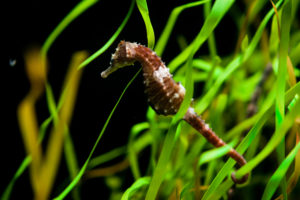
Because the Bay is heavily bordered by agricultural and residential areas, any time it rains or snows, released fertilizers get washed into its waters. Once these components drain into the Bay, they increase the water’s turbidity (or cloudiness), which makes it harder for sunlight to peer in and supply the grass with energy for photosynthesis. As Hampton points out, “groups like the Chesapeake Bay Foundation track the Bay’s percent coverage of seagrasses and they have found a definite link between growth or loss of acreage and rainfall/snowfall in a given year. In years with heavier rain/snow there is usually a loss of acreage, while drought years tend to bring an increase in the amount of acreage of seagrasses.”
While pollution has played a major role in its demise, warming waters have done so as well. Eelgrass thrives in cool water, and when temperatures reach 74º it begins to die back. To relieve itself from the heat, it releases excessive amounts of oxygen to cool down—an overwhelming process that eventually causes it to wither. As summers become hotter and temperatures linger a bit longer throughout the year, it forces this seagrass to tirelessly fight against these conditions until it no longer has the vigor to do so.
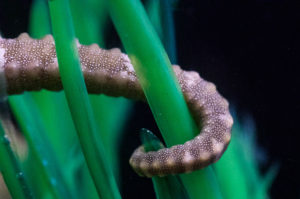
It’s not quite known how these problems will affect the seahorse overall but there is hope that it might adapt to the shifting conditions, like other Bay creatures have, including the blue crab. As Hampton notes, “we have seen from other species that they sometimes try to adjust their range to seek more suitable conditions. For example, species that prefer colder water may move farther north as temperatures increase. Conversely, those that like warmer water may move into areas they have not historically been in.”
The Mid-Atlantic states surrounding the Bay have put some environmental practices into place, such as a 2010 Environmental Protection Agency law that limits nitrogen, phosphorus, and sediment pollution pouring into this waterway. Many organizations and volunteers also work tirelessly to preserve this vital piece of nature. Still, more needs to be done to ensure this unique species continues to thrive and amaze for generations to come.


